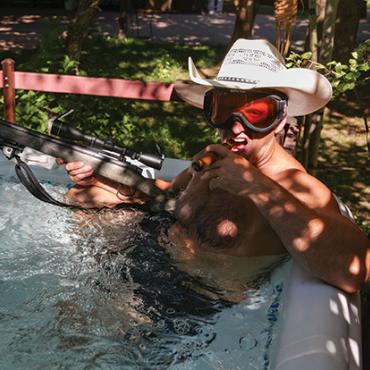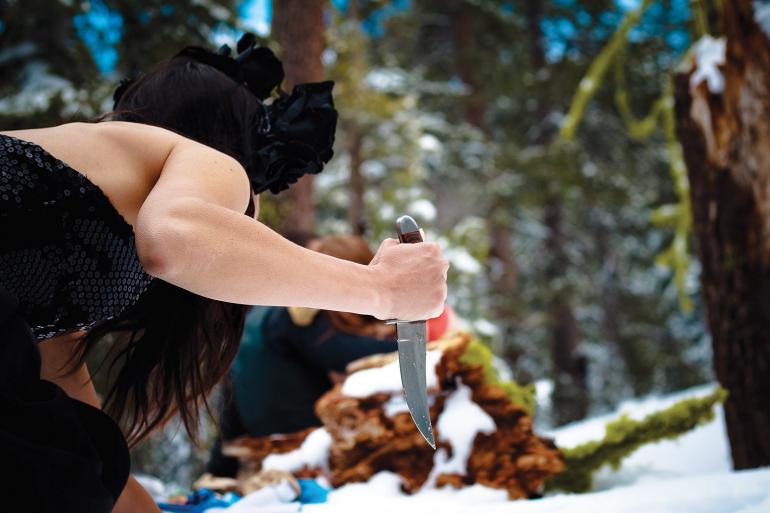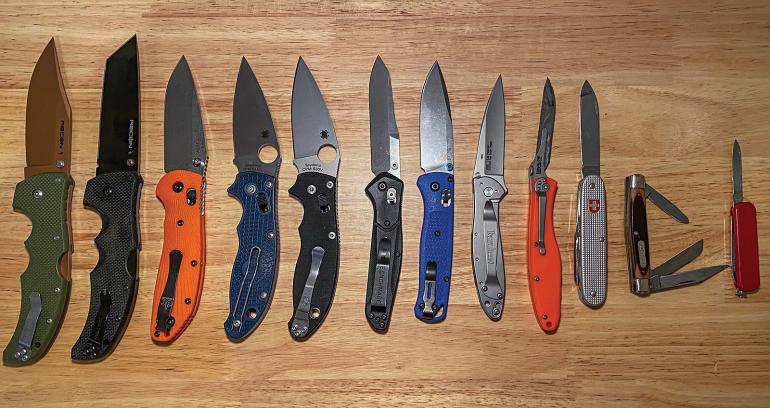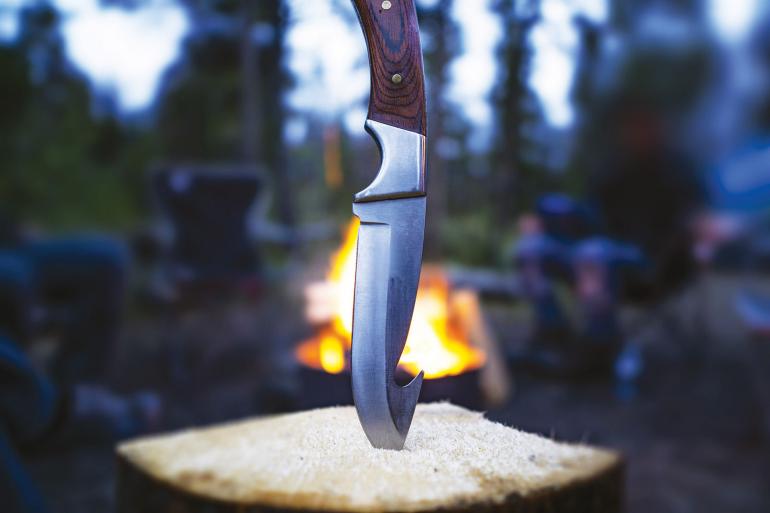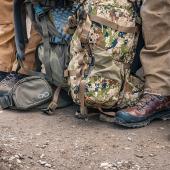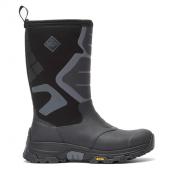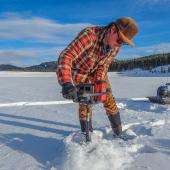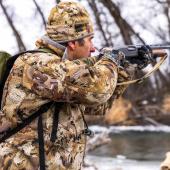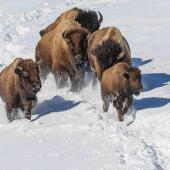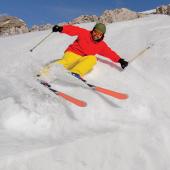Life on the Edge
Life on the edge.
A man without a knife is a man without a life.—Anonymous
A correlation recently crept into my consciousness: my best outdoor experiences have all involved a knife. From my first elk, to running rapids, to working on a guest ranch, to my old army days, a knife has always been nearby, either on my belt or stashed in a pack or pocket. Coincidence? Hardly—the outdoor life is a rugged, natural life, and no tool is more rugged and natural than the knife. Here are some things to think about when considering a purchase.
Treat a knife like a loaded gun: never point it at anyone.
Dos & Don’ts
DO get a knife that serves your intended purposes. Hunting, cooking, whittling, all-around? Do your research and choose carefully.
DON’T get a knife because it looks cool. Start with function and move to appearance; odds are you’ll find one that satisfies both needs.
DO spend the money for a good knife. Quality knives feel good in the hand; cheap ones don’t.
DON’T drop $500 on a fancy custom knife before you can appreciate the quality.
DO respect the blade. Every year, knives kill more people than rifles and shotguns combined. It’s a deadly weapon and must be treated as such.
DON’T play around, mishandle, or misuse the knife. It’s easy to accidentally cut yourself—or worse, someone else.
Knife Styles
FIXED. Classic mountain-main style, strong and durable but bulky. Wear on belt for tough-guy points.
FOLDING. More common, more easily stowed, less intimidating to onlookers. Drawback: slower deployment.
A dull knife is a dangerous knife.
Blade Shapes
DROP-POINT. Most common, great for general use including field-dressing game.
CLIP-POINT. Another classic, good for general use, excellent for precise cutting tasks.
Safety
Treat a knife like a loaded gun: never point it at anyone. When carrying it with the blade open or exposed, turn it around and keep the blade against your forearm, in case you trip or somebody bumps into you. Ditto for handing it to someone else: pass it over handle first.
Sharpening
A dull knife is a dangerous knife. Keep it sharp and you’ll avoid inadvertent lacerations. It’ll also get the job done better, faster, and easier. Here are some options.
WHETSTONE. A traditional stone is how most folks sharpen their knives. It takes a while to get the hang of it; practice makes perfect. Start with a small, fine stone and if things go well, upgrade to a multi-grade stone.
SHARPENING STICKS. This double-rod method is faster and easier to learn, but also harder to get a long-lasting edge. Mini-sticks are common in small sharpeners for field use.
WORKSHARP. For a razor-sharp edge in no time at all, check out this handy automatic sharpener. It uses belts and works like a charm—just practice on a crappy knife first, as a single mistake can take the point right off your blade.
RESHARP. At our local Ace Hardware stores, a specialized machine scans your knife and then hones it up automatically. The $7 fee is worth the time and effort saved.
CUTLERS. There’s a handful of professional knife-sharpeners in our area who can turn your blade around in a couple days—provided it’s not the middle of hunting season.

